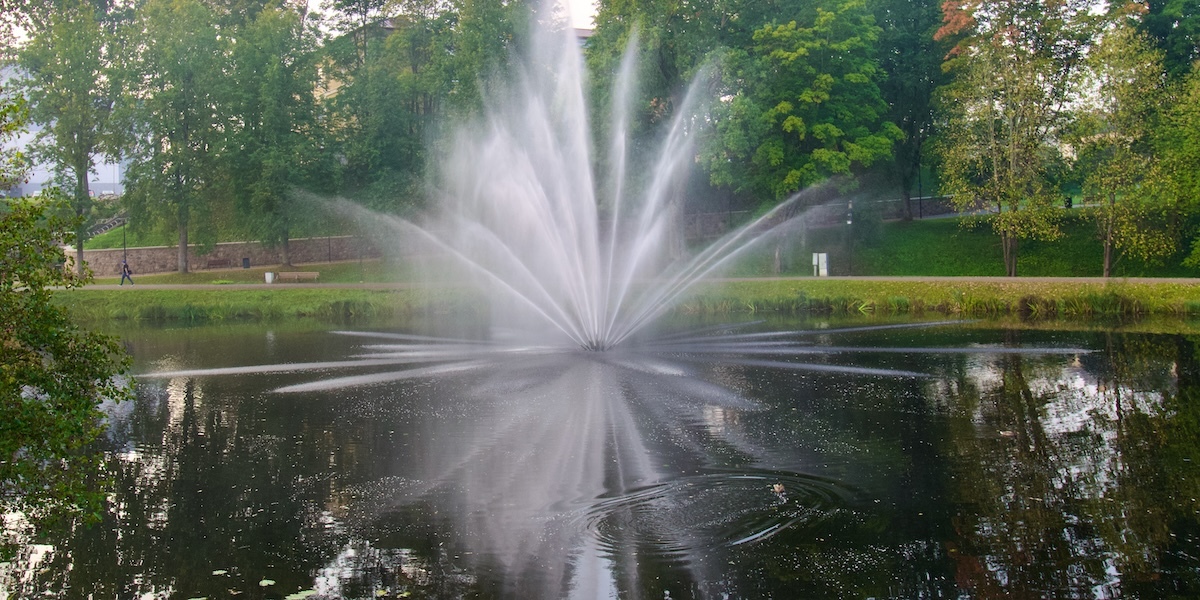
This town is bursting with history, culture and beautiful places – a surprise around every corner.
Valmiera is not a large town, but it is the largest settlement in Vidzeme, a region of Latvia. The town is divided in two by the River Gauja. This river has served the town as both a defence and a trading route. Its port was so important during the Medieval period it became a member of the Hanseatic League. This organisation was founded by north German towns and German merchant communities abroad to protect their mutual trading interests. It dominated commercial activity in northern Europe from the 13th to the 15th century. A large mural recording this stands behind some little slope-roofed kiosks, the Hansa Lodges, that are occasionally used to host Medieval-themed markets.
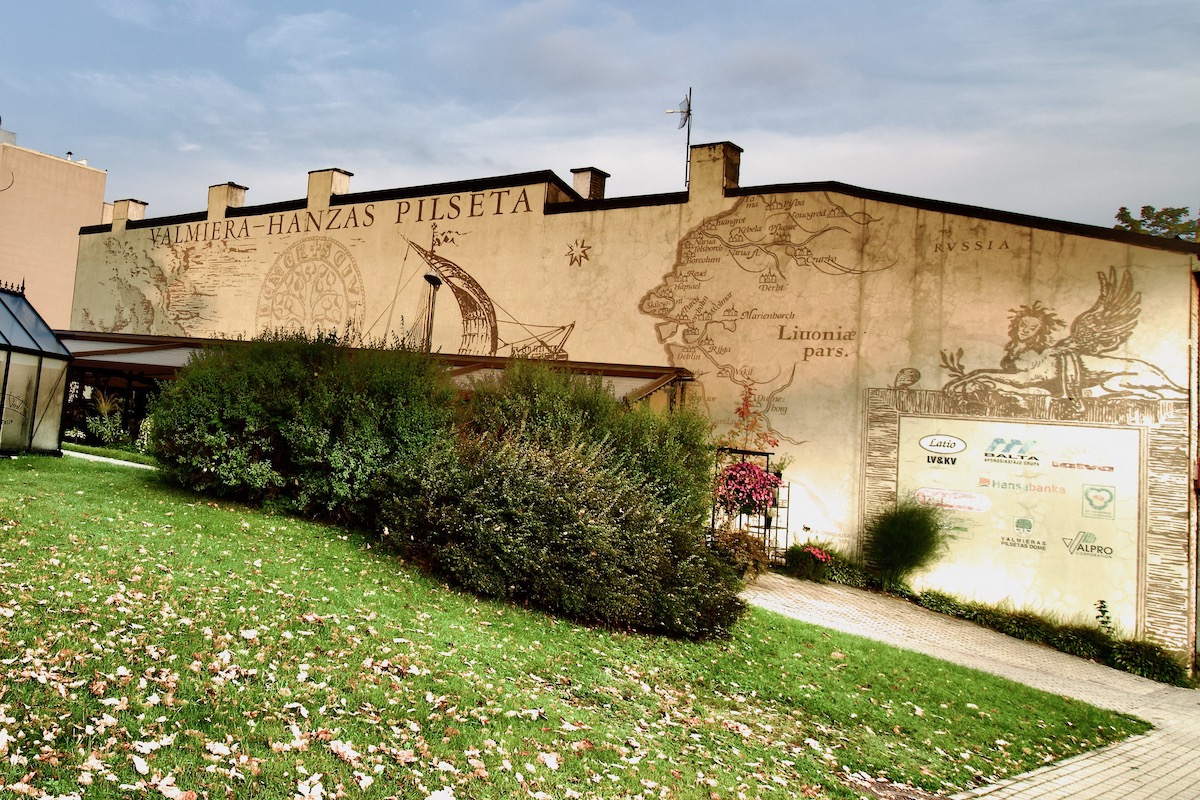
Today the River Gauja is a place of enjoyment, where residents of Valmiera and its visitors can enjoy swimming in it waters and walking along its banks. It only takes five minutes from the town to reach the trails along the river. Another early defence of the town is the lake now known as Lake Dzirnavu.
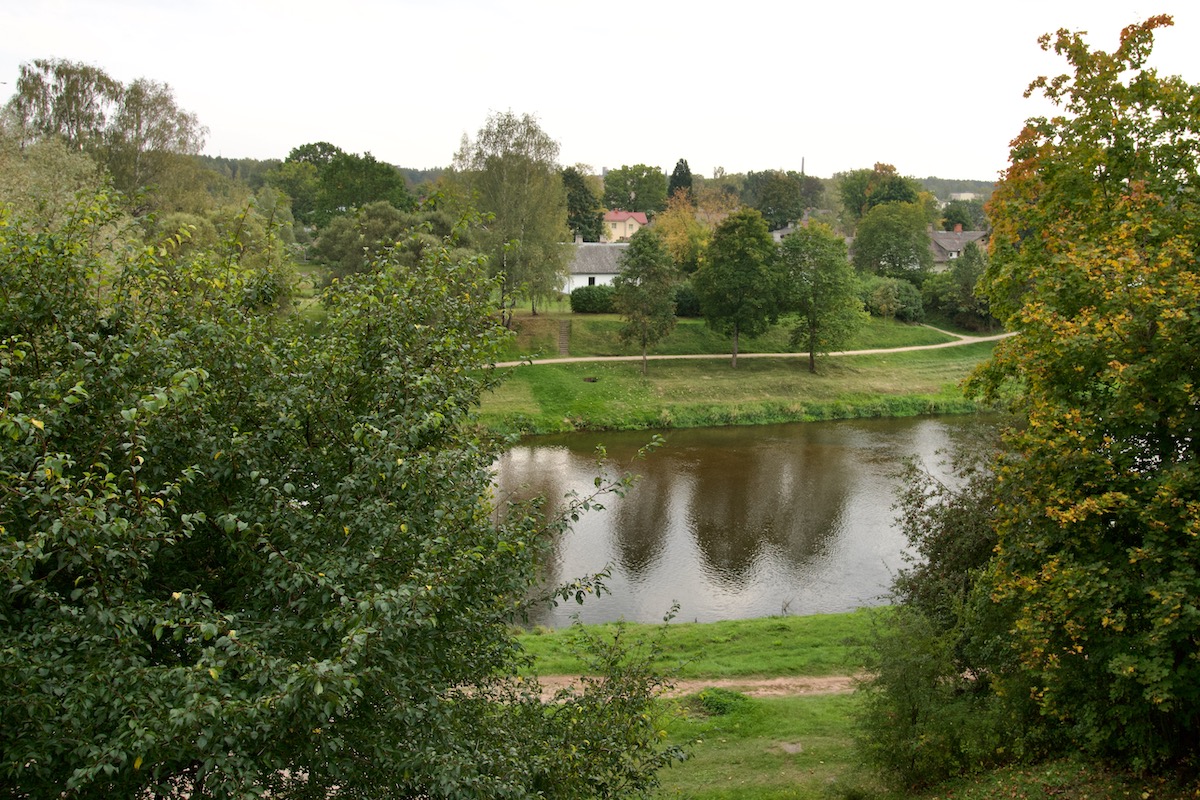
Lake Dzirnavu in Valmiera, Vidzeme in Latvia
In ancient times this lake was created by damning the River Rātsupīte, a tributary of the River Gauja. The dam and the sluice could be used to raise the water level during times of war. They were also used when a water mill operated on the lake from the seventeenth century until the building was demolished in1937. At the top of the lake is an interesting sculpture, Kroders Apple Tree. It was created by Aivars Vilipsons and Ivars Mikelsons in 2020 to celebrate the work of Olgerts Kroders, a theatre director who was closely associated with the Valmiera Theatre for twenty years.
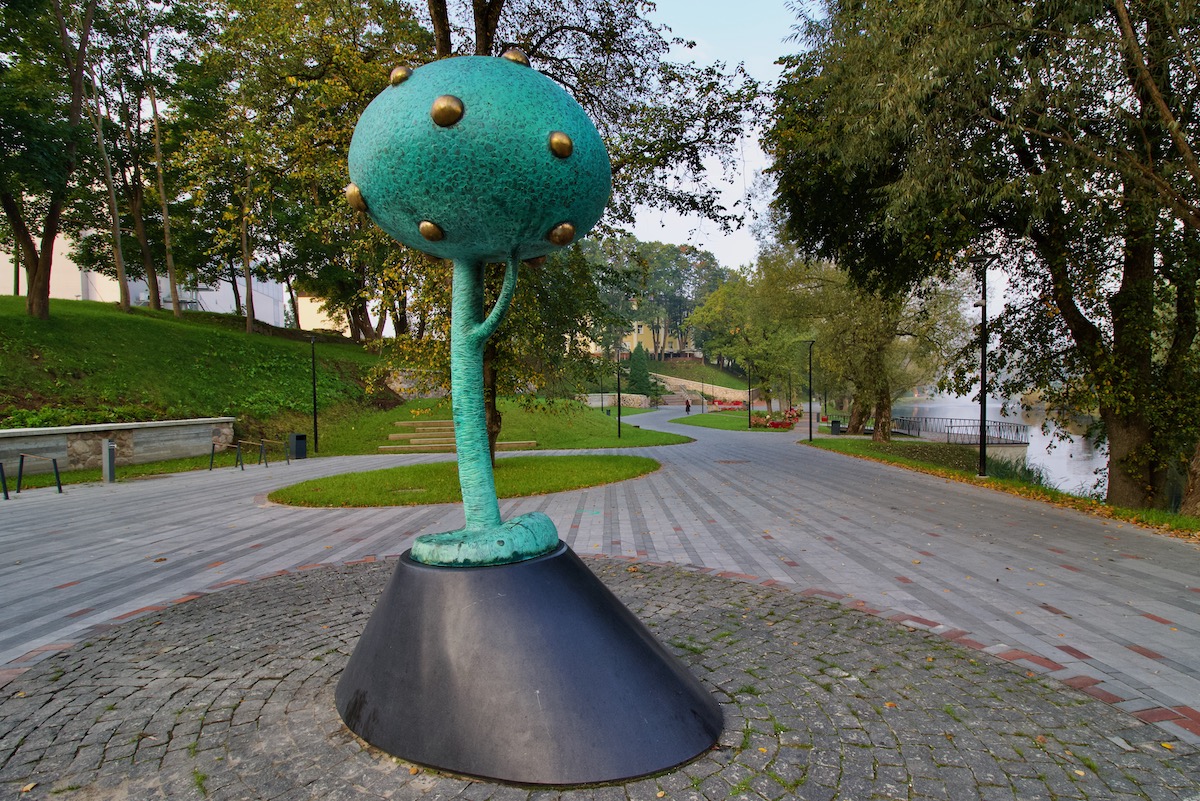
Skirting one side of the lake is the Elephant Street (Ziloņu iela). The only elephants connected with this street are the large wooden carvings that now decorate it. Its name is a play on words. It is close to the site of a medieval fortification known as the Blue Bastion (Ziais Bastons). This was simplified to Blue Street (Zilā iela) in a city plan drawn up during the twentieth century. It was after that the citizens of Valmiera began referring to it as Elephant Street (Ziloņu iela) and the name was later made official.
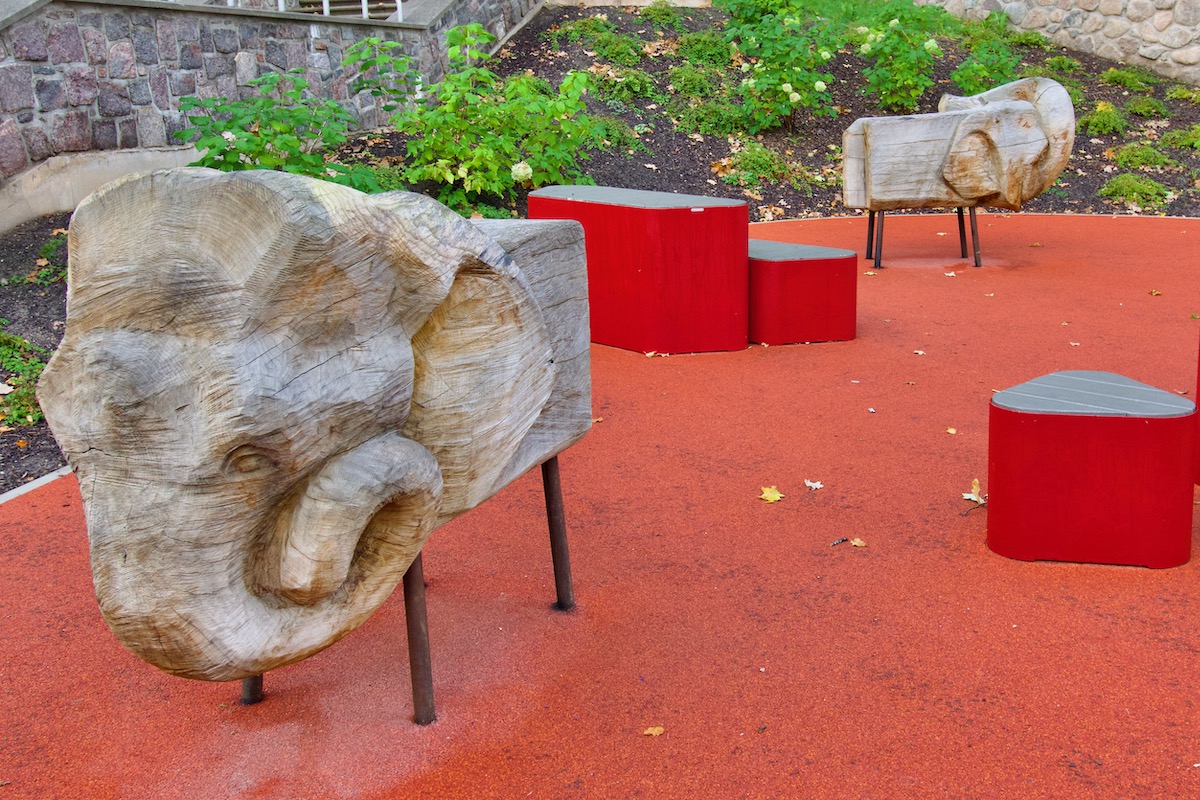
Lake Dzirnavu is a beautiful place for a leisurely stroll or to simply sit on one of the benches enjoying the splendid views of the fountain in the middle of the lake. This fountain lights up at night – a spectacular sight that can be seen from the bridge over the River Rātsupīte that once provided an additional defence to the old Livonian Castle on its banks but now in ruins.
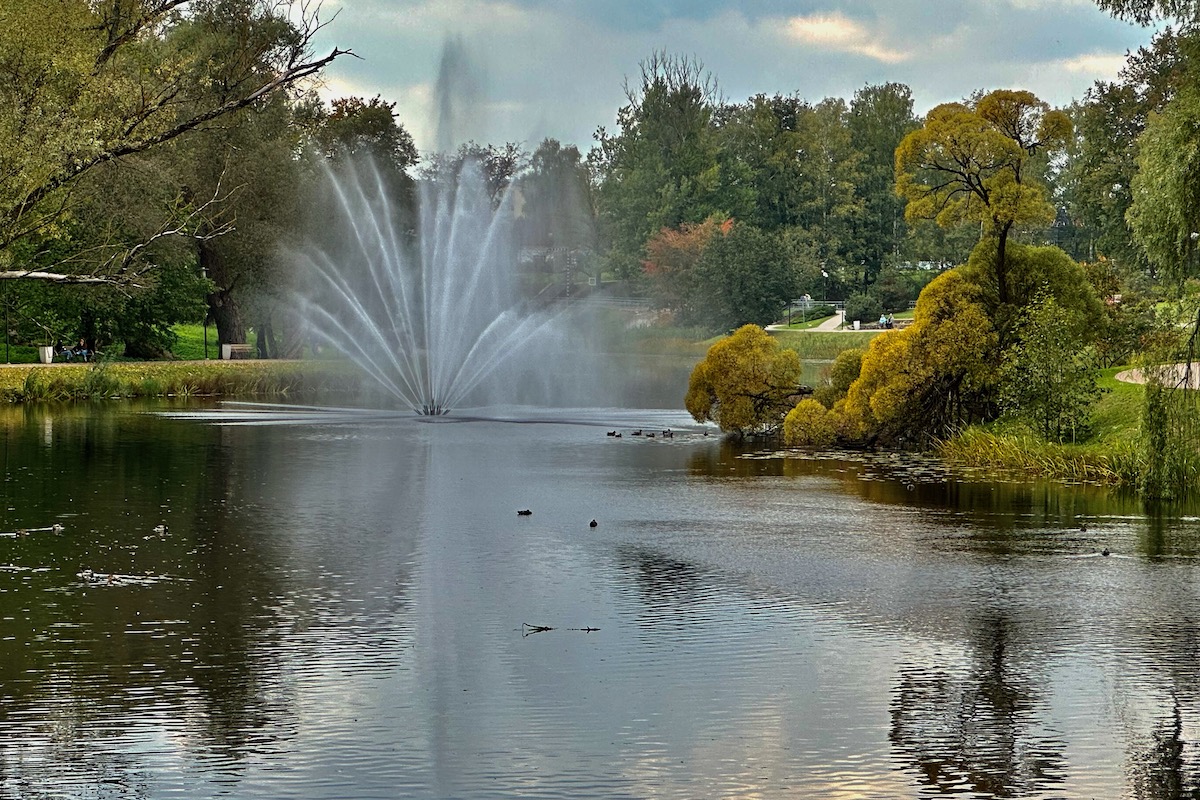
Livonian Castle Ruins in Valmiera, Vidzeme in Latvia
All that is left of the thirteenth century Livonian castle, once an important fortress, is a section of its walls. This castle was destroyed by the Russians during the Great Northern War in 1702. It was never restored and its stones and other materials were used by the town’s inhabitants to construct other buildings. Behind these walls is Valmiera Museum (Valmieras muzejs), a complex incorporating eight historic buildings.
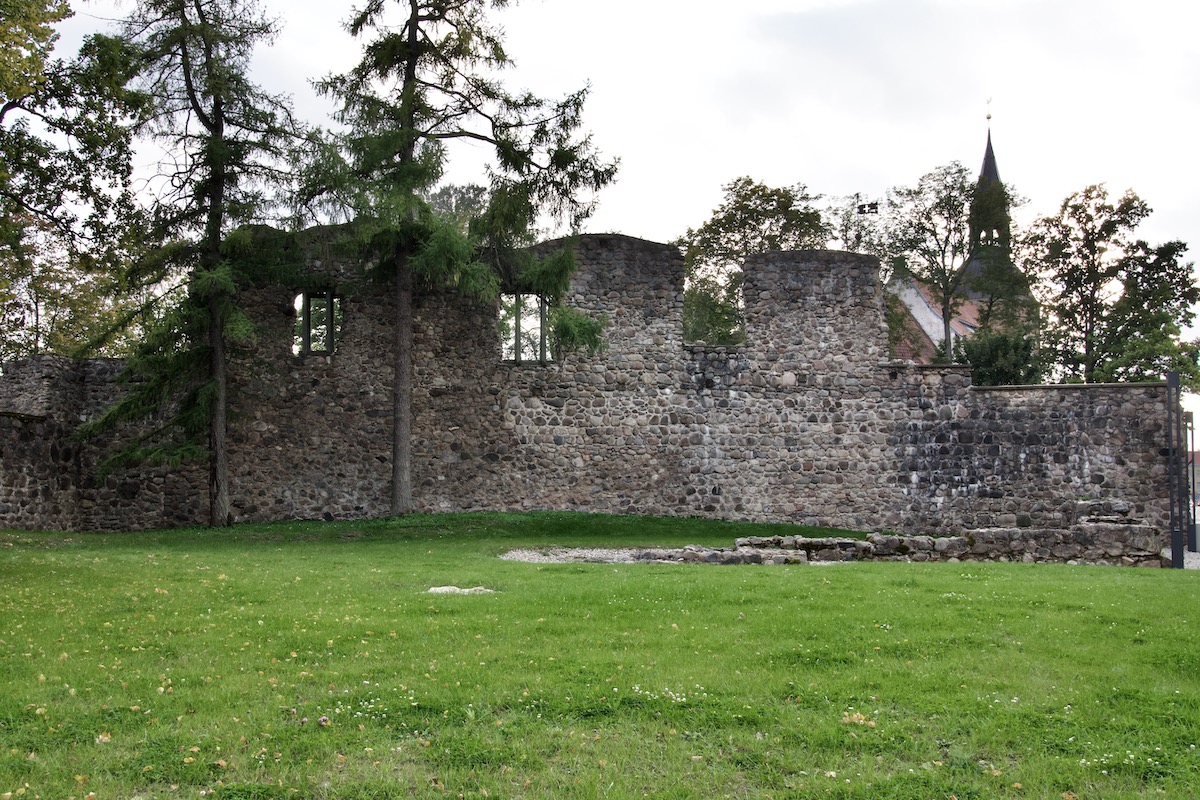
Valmiera Museum of Regional History and Art in Valmiera, Vidzeme in Latvia
The eight buildings of the Valmiera Museum of Regional History and Art span a period from the mid-eighteenth century to the twenty first century. These buildings between then contain the most significant collections of historic value in Vidzeme as well as the largest collection of artworks belonging to Latvian artists. Its most recent addition is a glass-sided building on seventeenth century foundations. Outside visitors can appreciate the thickness of the stone walls. Inside there is an exhibition narrating the history of the castle and of Valmiera as a Hanseatic town.
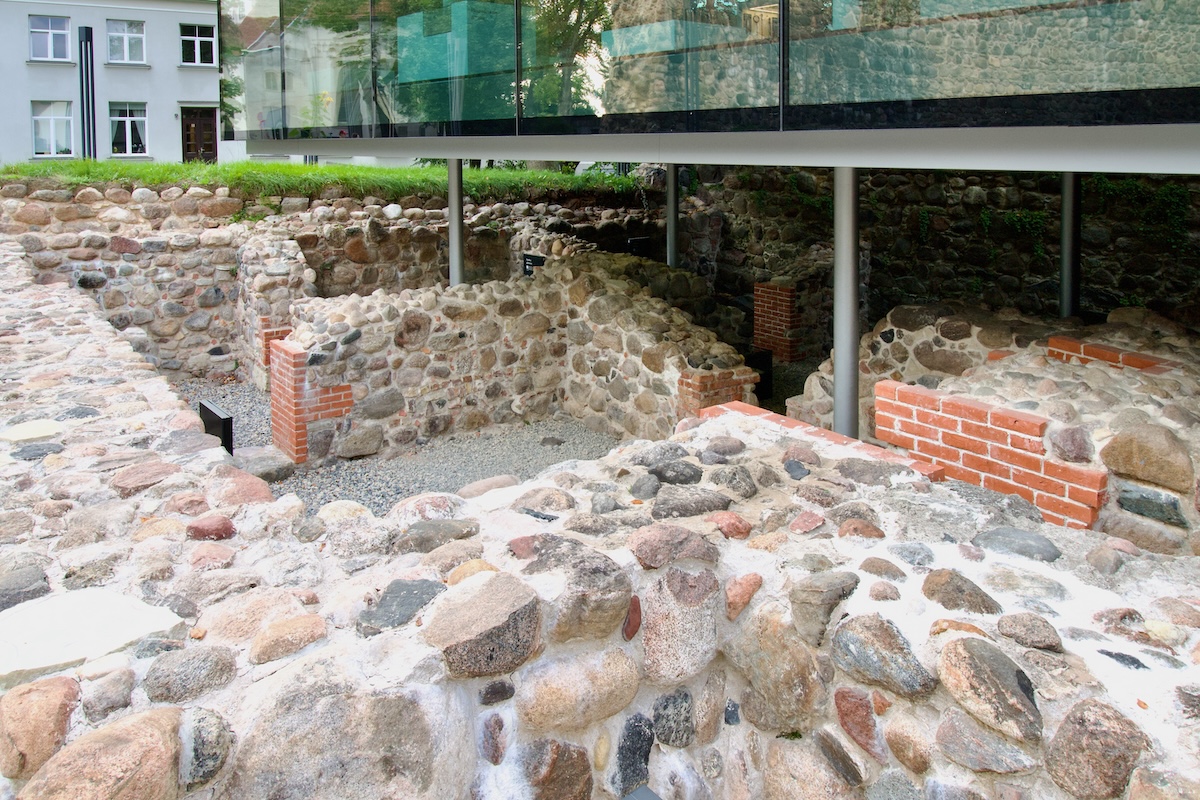
Also behind the remnannts of the castle walls is the Old Pharmacy, the oldest wooden building in Latvia which dates from 1735. And another old wooden building in this attractive complex houses the Café Vīnkalni, a pizzeria offering Italian pizzas baked in a wood-fired oven. Next door to the museum is St Simon’s Church.
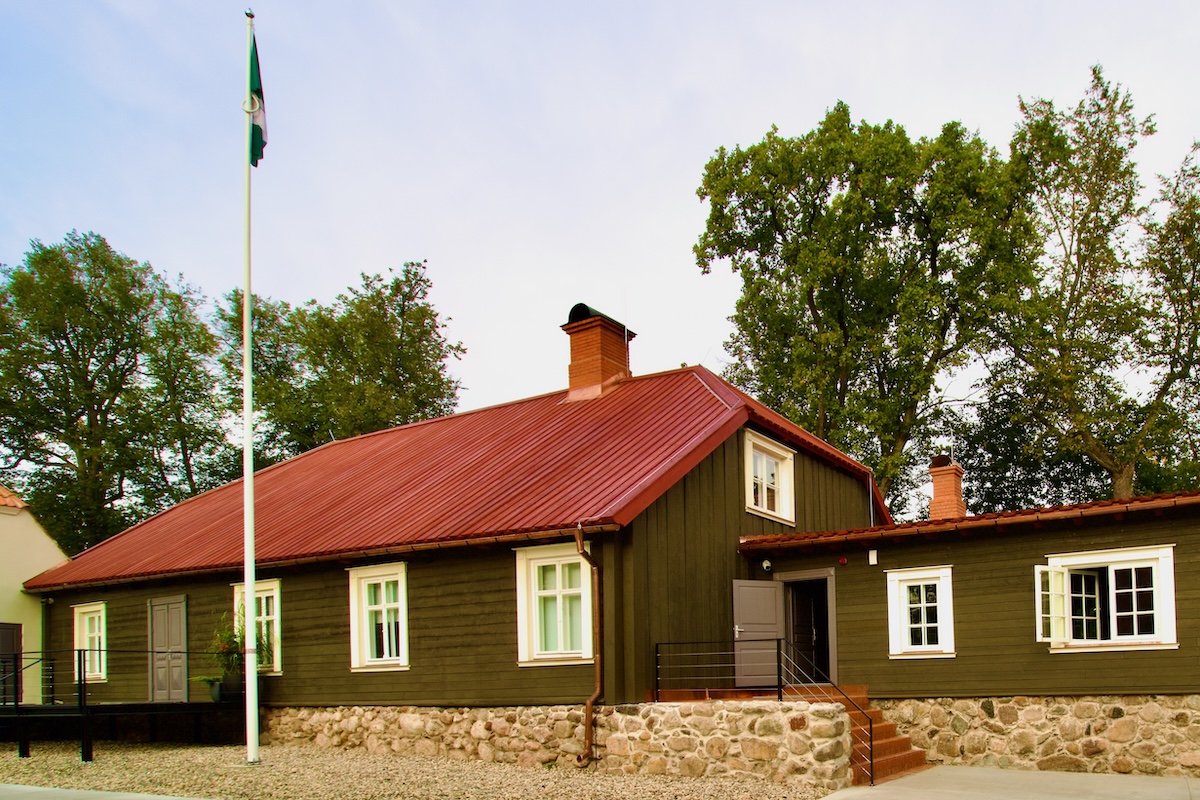
St Simon’s Church in Valmiera, Vidzeme in Latvia
The Lutheran Church of St Simon was built in 1283 and is not just a symbol of Valmiera but one of the most important examples of medieval architecture in Latvia. Valuable monuments of the past include medieval tombstones, an altarpiece by the painter Karl Christian Fogel, the chancel made in 1739 and the organ of the famous European artist Friedrich Ladegast. The restored church tower is open to visitors who can see the church bell, the clock mechanism and a small exhibition hall before viewing the panorama of the town below at the top. This church is one of the stops on the Strenči-Valmiera section of the Camino Latvia trail. Valmiera also features an Orthodox church dedicated to St. Sergey of Radonezh.

St Sergey of Radonezh Orthodox Church in Valmiera, Vidzeme in Latvia
The construction of the ‘new’ Valmiera Orthodox Church began in 1877 and took three years to complete and was consecrated a year after completion. In 1903 a mausoleum was built next to the chapel dedicated to the Mengden family. An Orthodox congregation was established in Valmiera during the 1920s following the widespread conversion of farmers in Latvia to Orthodoxy both due to the general policy of Russification here and the hope this would lead to the acquisition of land. Agrarian Reform took place in Latvia during the 1920s when land was taken from their nobleman owners and given to Latvian farmers. Close to this church is the Light Cinema (Gaisma) one of several entertainment venues in the town.
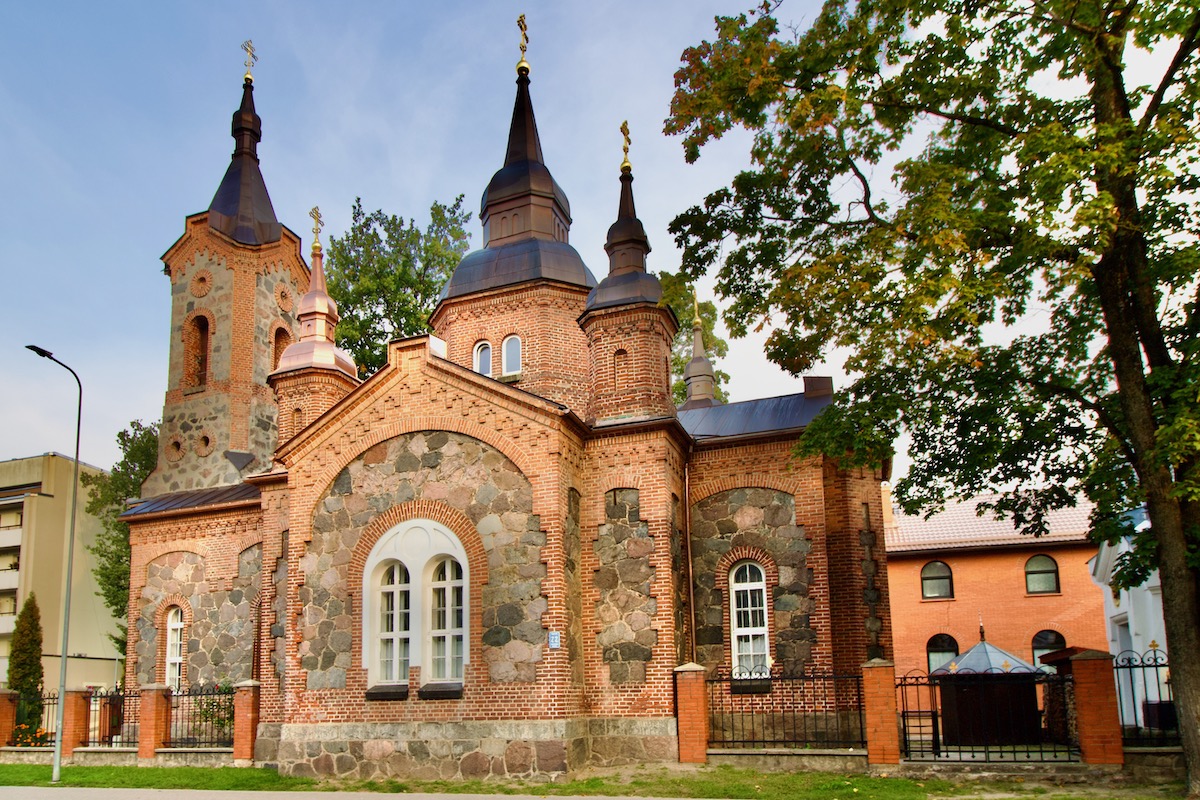
Entertainment and Culture in Valmiera, Vidzeme in Latvia
Gaisma Cinema is an example of Stalin-era construction and has kept a lot of its original interior decoration. It was built in 1950 for the screening of Soviet patriotic films following the destruction of Valmiera’s original cinema during the Second World War. There have been changes to the original layout of the cinema and it has been used for different purposes since it opened in 1951. For example, a jazz club and restaurant occupied its lobby from 2011 to 2016. Despite this the building has retained authentic wall decorations both on its facade and in the large auditorium.
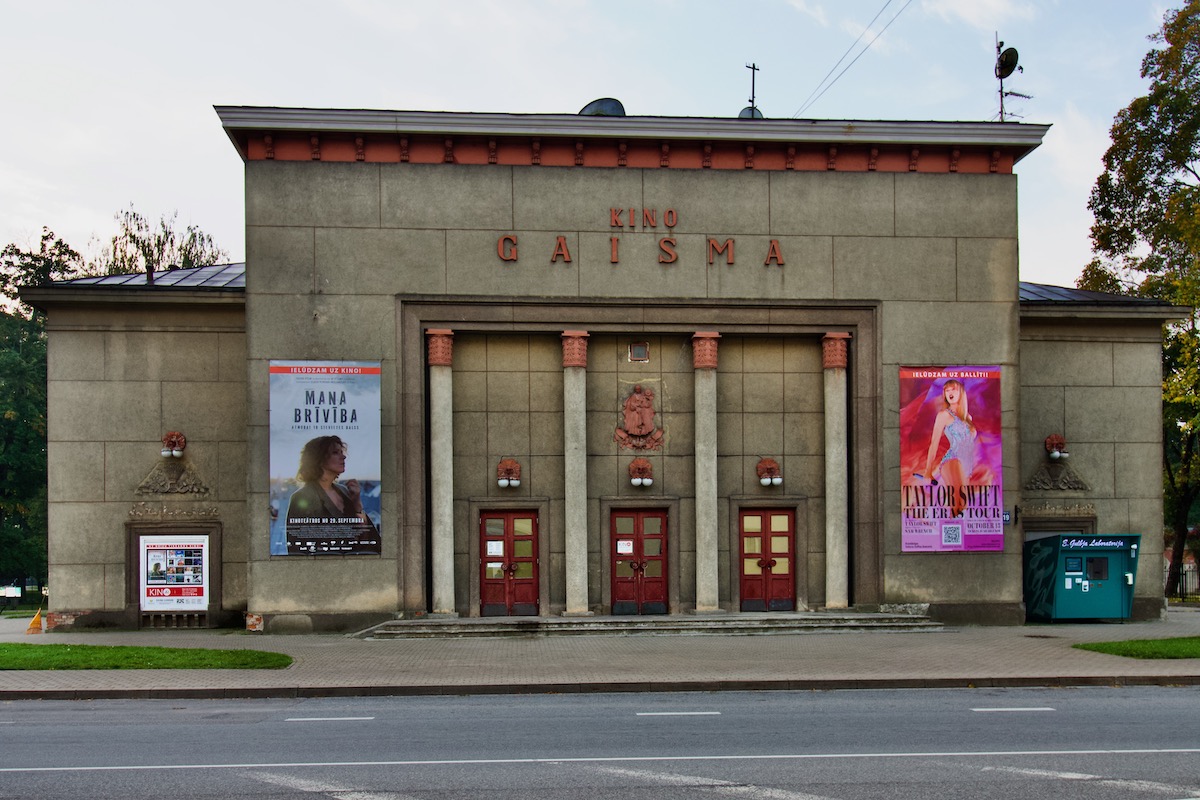
Reconstruction of the renowned Valmiera Drama Theatre commenced in 2022 but encountered so many problems that the theatre had to find a new home. It took over an empty municipal boiler house (kurtuve) and hosted a variety of events including workshops and dramatic productions. The adaption of the boiler house was quick and successful and even includes a small bar. When the Valmiera Drama Theatre reopens the Boiler House will continue to operate as the Contemporary Art Centre.
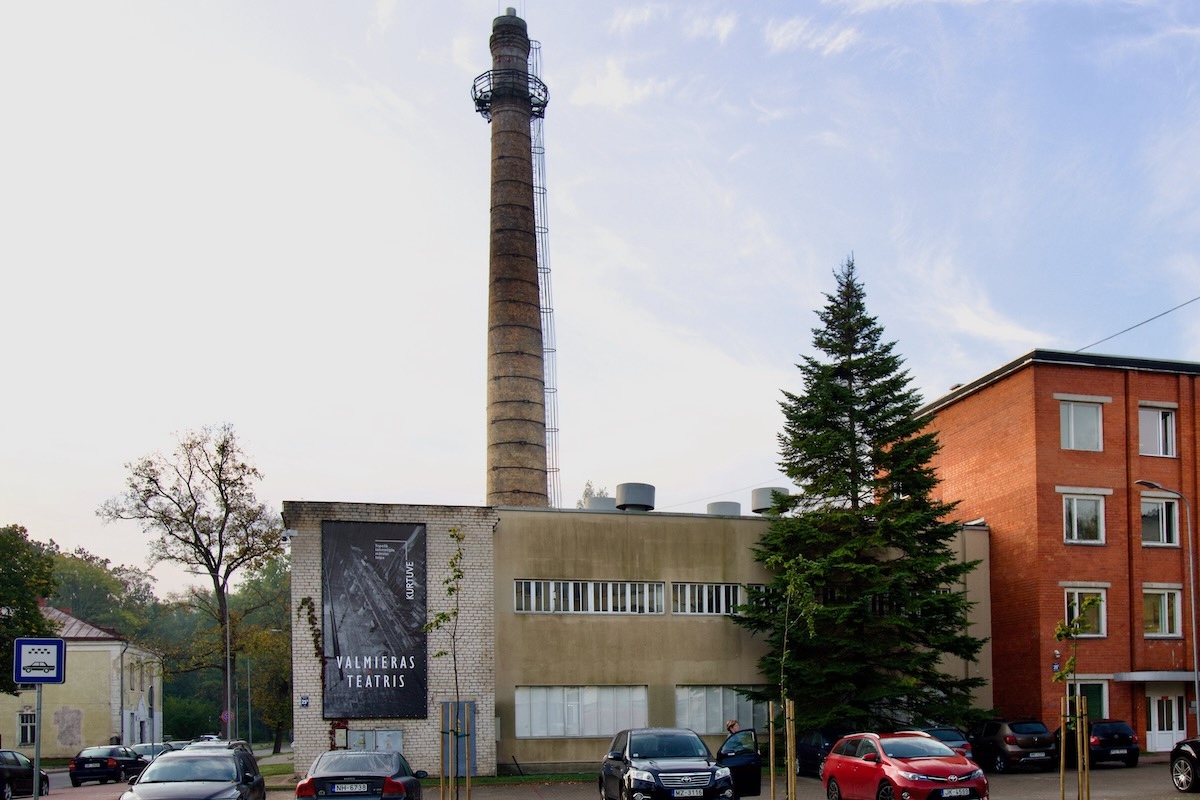
Valmiera’s Cultural Centre is the biggest indoor venue for a wide variety of events and performances in Valmiera. It was built in 1965 during the Soviet era and has been the town’s cultural centre since then. Located at the heart of the city it hosts national and international events in its two halls. It is a major contributor to Valmiera’s growing reputation as a city of cultural. Outside this centre is an unusual sculpture entitled The Fountain of Light. Considered an enigma by many it was created by Andris Vārpa, a native of Valmiera. Valmiera also boasts some excellent sporting facilities some of which would be of interest to its visitors.
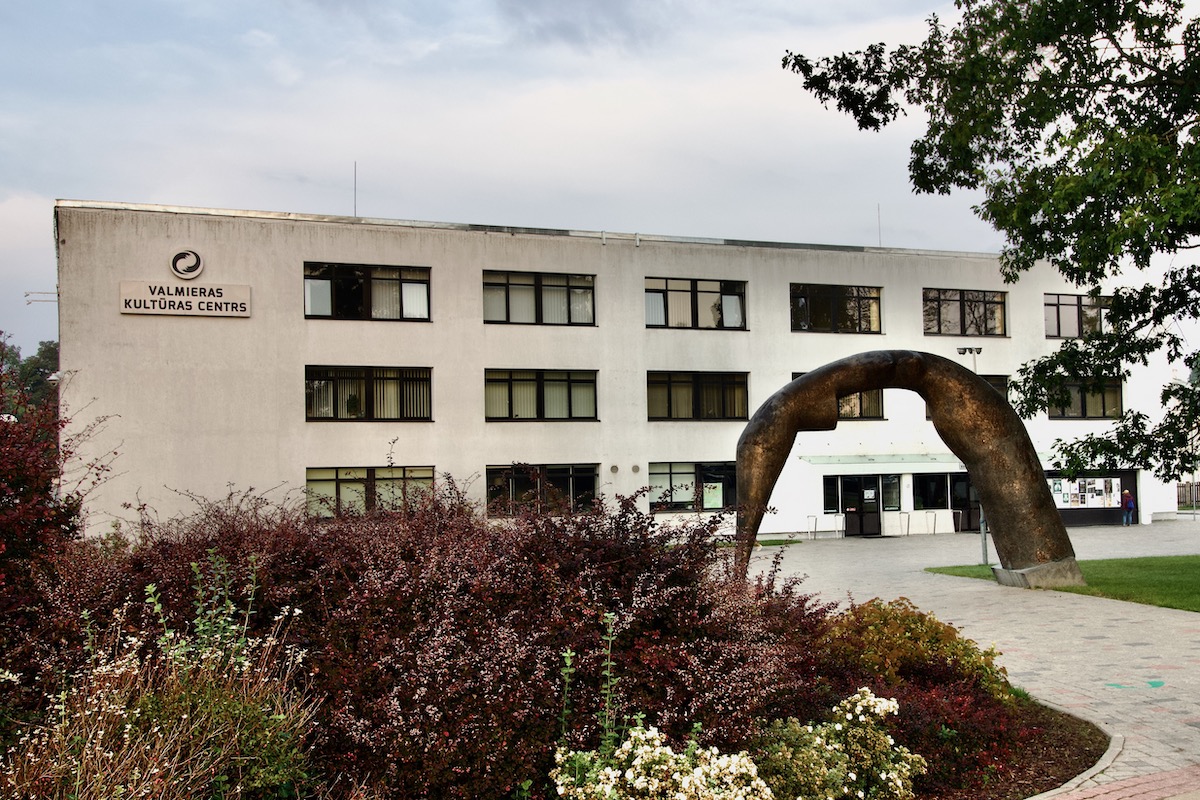
Active in Valmiera, Vidzeme in Latvia
Valmiera is the home town of two Olympic medallists. The most recent, Maris Strombergs, a double gold BMX champion inspired the construction of the Valmiera BMX track. The town’s first Olympic medallist, Jānis Daliņš, was also the first Latvian to win an Olympic medal for his country, silver in the 50 kilometre walk in 1932. His name has been given to a fantastic multi-facility sports stadium. The Jānis Daliņš Stadium is surrounded by three sports fields that can facilitate large-scale sporting events. Particularly attractive to younger visitors is a large adventure playground in a wooded area next door.
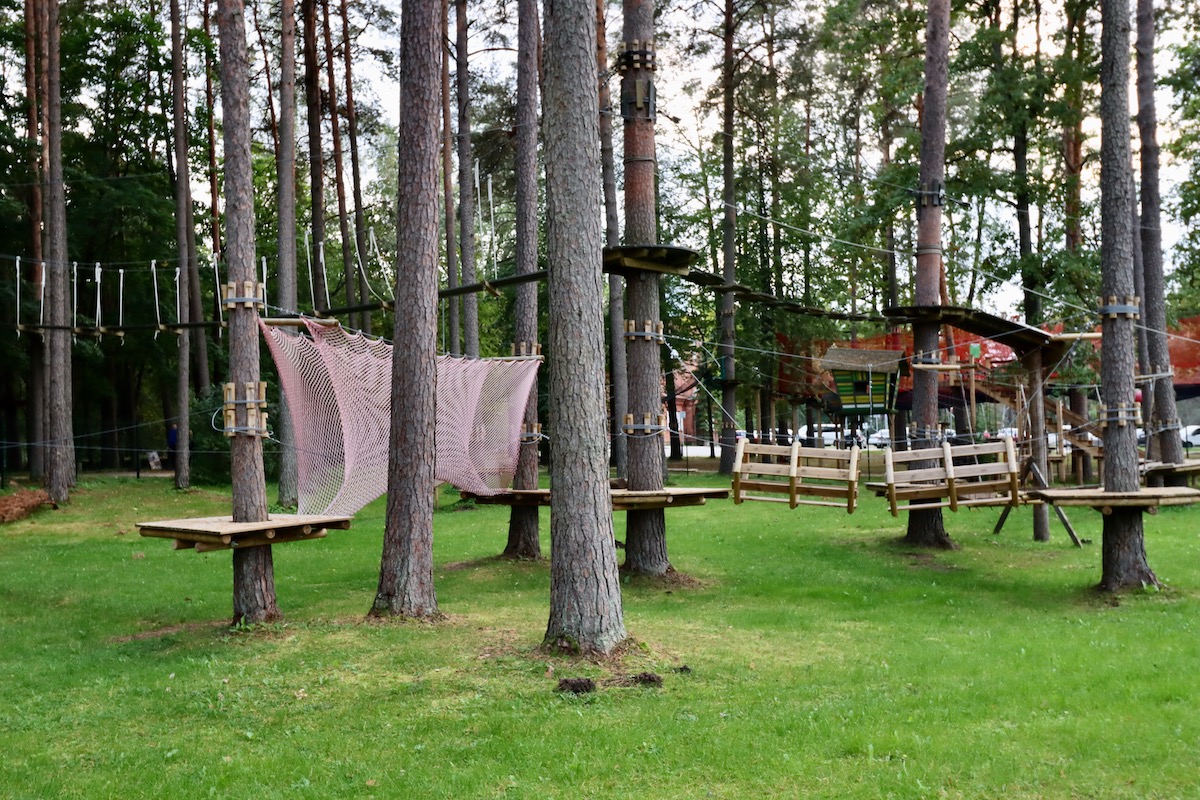
During the lockdowns relating to the Covid pandemic residents of Valmiera busied themselves reconstructing the Valmiera skate park to create a modern sports recreation park for children, young people and adults. This facility includes a concrete skate park, an asphalt bike track, a roller skating track, a streetball field and playgrounds for different age groups. Anyone can have a go and it is fun for all, including the spectators around the perimeter.
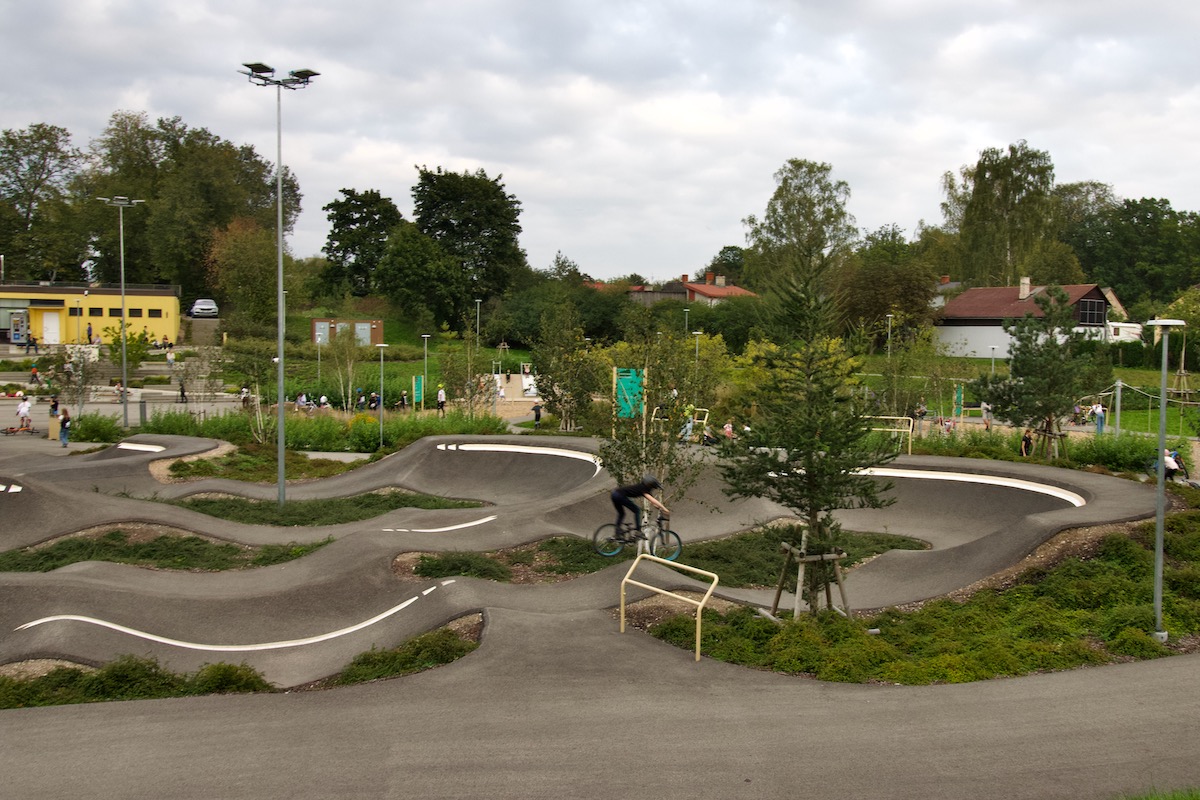
Valmiera may be a small town but it is packed with interesting things to do. Find out more here
Available on GPSmyCity.com
This article is now featured on GPSmyCity. To download this article for offline reading or travel directions to the attractions highlighted in this article, go to Walking Tours in Valmiera on GPSmyCity
Valery Collins is the Experienced Traveller
 An excellent raconteur, Valery has been writing about her experiences on the road since she started travelling 25 years ago. After publishing four books she turned to online travel writing.
An excellent raconteur, Valery has been writing about her experiences on the road since she started travelling 25 years ago. After publishing four books she turned to online travel writing.